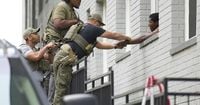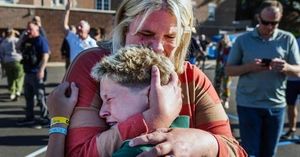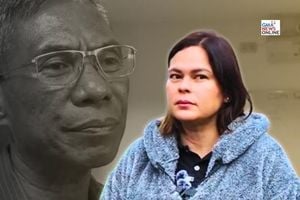On a typical summer day, the Columbia Heights neighborhood of Washington, D.C. buzzes with life—vendors hawking pupusas and fresh fruit, shoppers weaving between white tents, and the air tinged with the sound of multiple languages. But on August 19, 2025, the scene had shifted dramatically. The streets were quieter, the vibrant marketplace subdued, and the usual crowd, especially Spanish-speaking vendors and customers, had all but vanished. The cause? President Donald Trump’s sweeping federal law enforcement and immigration crackdown, a move that’s rippling far beyond the iconic monuments and into the heart of D.C.’s diverse communities.
"Everything has stopped over the last week," said Yassin Yahyaoui, a jewelry and glass figurine vendor, in an interview with the Associated Press. He noted that most of his customers and fellow sellers—particularly those who speak Spanish—have simply "disappeared." This sudden quiet wasn’t just a fluke; it was a stark sign of the anxiety and uncertainty gripping local residents and business owners since the federal operation began.
Since August 7, 2025, according to the White House, federal authorities have made 465 arrests in Washington, D.C., including 206 individuals identified as being in the country illegally. The administration has touted these numbers as proof of a successful push to restore order. On August 11, Trump signed an executive order placing the Washington D.C. Police Department under federal control for 30 days—a move that could only be extended with congressional approval. The president’s supporters argue that these measures are necessary to combat what they describe as a "crime emergency," but local officials and many residents see it differently.
Karoline Leavitt, the White House press secretary, defended the administration’s approach, stating Trump was "unapologetically standing up for the safety of law-abiding American citizens." But for many on the ground, the presence of federal agents and National Guard troops has brought more fear than reassurance. Glorida Gomez, a longtime fruit stand operator in Columbia Heights, told the Los Angeles Times that business is now worse than during the COVID-19 pandemic. "Many vendors stopped coming because they were afraid of encountering federal agents," she said. Customers, too, are holding back, with some, like vendor Reina Sosa, explaining that people are "saving it in case something happens," such as being detained by immigration enforcement.
The crackdown’s reach is visible across the city. On the same day that vendors in Columbia Heights were packing up early, U.S. Immigration and Customs Enforcement (ICE) agents and local police stopped a moped delivery driver just blocks away. The agents, some in tactical vests and one with his face obscured by a green balaclava, questioned the driver about his employment and legal residency. No arrest was made, but the message was clear: scrutiny had intensified.
Federal law enforcement presence has ballooned, with agencies including the FBI, Homeland Security, Park Police, and U.S. Marshals conducting operations in various neighborhoods. In Petworth, about 20 officers executed a warrant at an apartment building. Witness Yanna Stelle, 19, described the scene to AP: "That was too many police first thing in the morning—especially for them to just be doing a warrant." In another incident that drew widespread attention, Christian Enrique Carias Torres was detained on August 16 during a confrontation with ICE agents. According to an FBI affidavit, Carias Torres kicked one agent and another was injured during the scuffle. A stun gun was deployed to subdue him, and he was later charged with resisting arrest.
These highly visible actions have not gone unnoticed by the public—or by lawmakers. The Trump administration’s efforts have included a call for more National Guard troops from Republican-led states. As of August 19, National Guard members from West Virginia, South Carolina, Mississippi, and Louisiana had already begun arriving in D.C. to support the crackdown, joining the 800 D.C.-based Guard members. Additional deployments from Ohio and Tennessee were also announced, with a total of 1,100 out-of-state troops expected to bolster the federal presence.
But this show of force has sparked resistance both on Capitol Hill and in the city’s neighborhoods. On August 19, Democratic Representative Sam Liccardo of California introduced legislation requiring the administration to report the cost, legal basis, and civilian interactions of any National Guard deployment not related to a natural disaster. The bill, supported by 44 Democrats including Washington’s non-voting House delegate Eleanor Holmes Norton, reflects growing concern over what many see as an unprecedented federal intervention in local affairs. "Are L.A. and D.C. a test run for a broader authoritarian takeover of local communities?" Liccardo asked, referencing the skepticism of the nation’s founders toward "executive control of standing armies."
The White House, meanwhile, has pushed back on these criticisms. Abigail Jackson, a spokeswoman, said, "Democrats continue to side with criminals over law-abiding Americans." The debate over the legality and necessity of the deployments is intensifying, even as the operation continues to unfold on the ground.
One key question remains: What impact will the National Guard actually have on public safety? Crime analyst Jeff Asher of AH Datalytics told AP, "The fact of the matter is that the National Guard are not law-enforcement trained, and they’re not going into places where they would be engaged in law enforcement activity. So I don’t know that it’s fair to expect much of it." In other words, while the Guard can assist with crowd control and protecting landmarks, their ability to directly reduce crime may be limited.
President Trump, for his part, has declared victory on social media, boasting that his initiative has transformed Washington from "the most unsafe ‘city’ in the United States" to "perhaps the safest, and getting better every single hour!" Metropolitan Police data does show an 8% drop in reported crimes during the week ending August 19 compared to the previous week, with robberies and car thefts declining, burglaries ticking up slightly, and homicide rates holding steady. Still, experts caution against drawing sweeping conclusions from such a short time frame. "I think 30 days is too short of a period to really say anything," Asher noted.
For now, the city’s residents are left to navigate a new reality—one marked by heightened law enforcement visibility, economic uncertainty for small business owners, and a charged political atmosphere. As the debate over federal intervention and local autonomy continues, the lived experiences of those in neighborhoods like Columbia Heights serve as a daily reminder of the profound impact policy decisions can have on ordinary lives.





